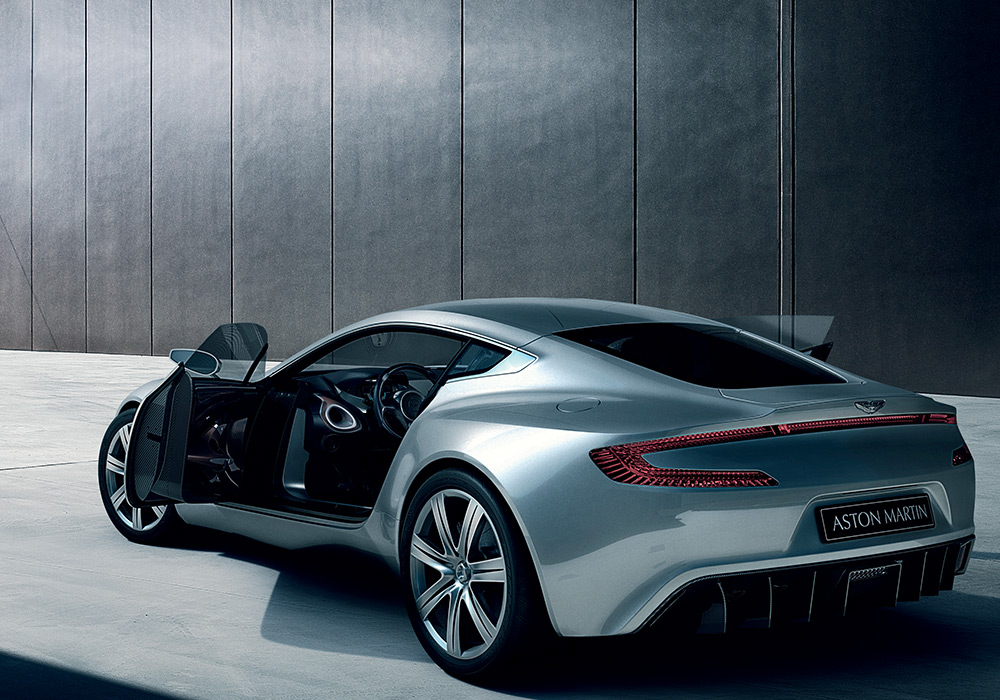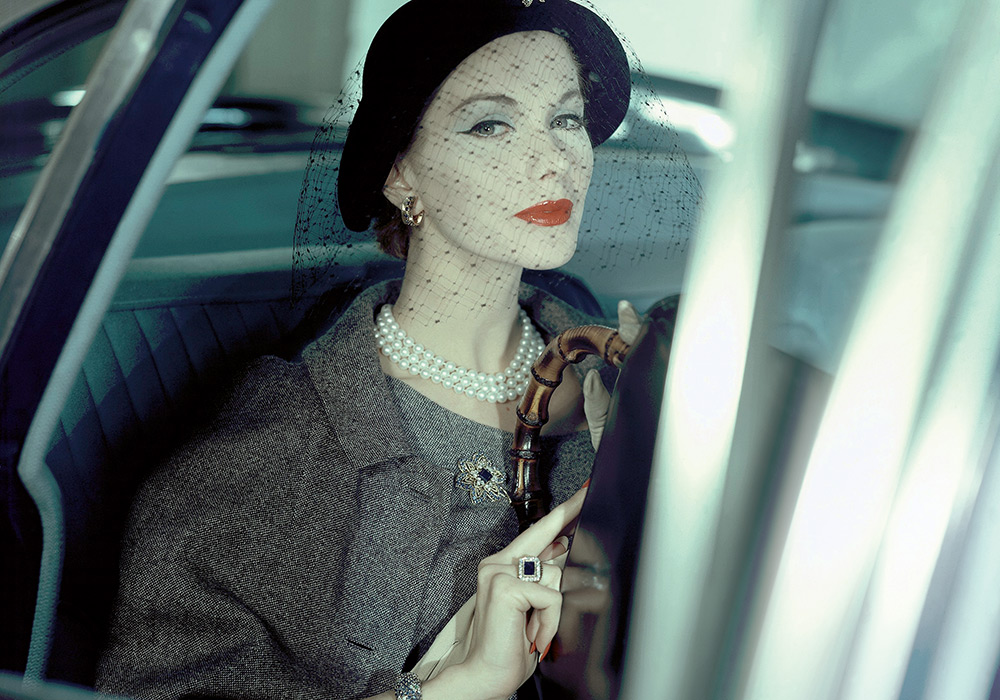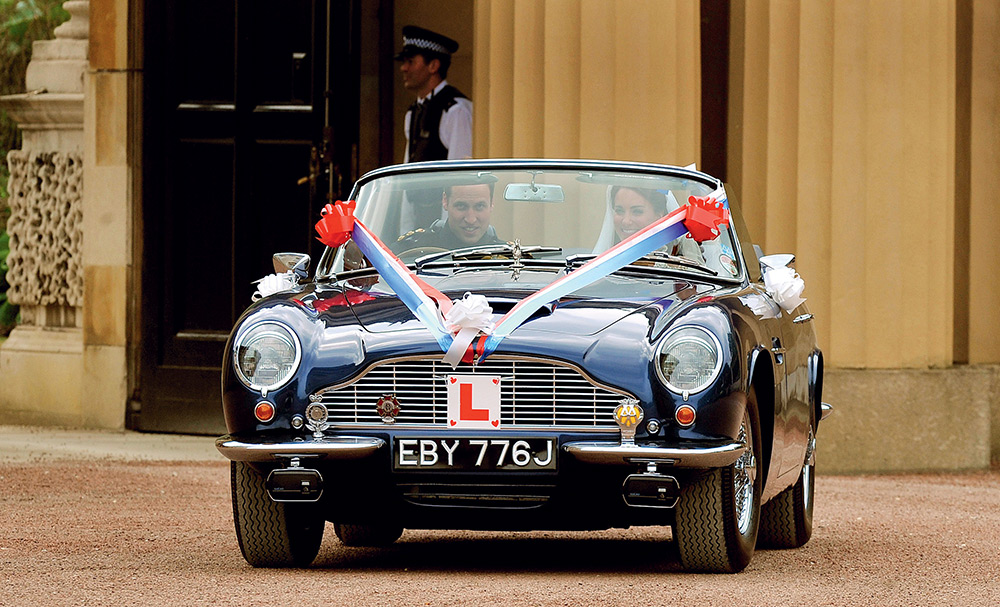Previous Article
Next Article
- AM WORLD
- FEATURES
centenary dr ulrich bez
DRIVING FORCE
Dr Ulrich Bez has overseen Aston Martin’s evolution into a modern, forward-thinking sports car manufacturer, writes Jonathan Bell
Portrait: Max Earey
aston Martin has always identified strongly with its management, taking strength from their passion and visibility. An Aston Martin was a sports car, to be sure,
but as the company’s founders Lionel Martin
and Robert Bamford demonstrated, sporting
need not mean extravagant or ostentatious; it was about craft, technology, design and emotion. Over the years, Bamford and Martin’s successors have
taken this mantra to heart, through David Brown to Victor Gauntlett. So it was fitting Aston Martin should enter the modern era under a man who understood perfectly the relationship between design and engineering, brand and heritage, style and substance.
Dr Ulrich Bez has spent 13 years as Aston Martin’s CEO, transforming the fortunes of one of the world’s best-known car brands and taking it to its centenary year. A “car man” through and through, Dr Bez has become synonymous with the modern Aston Martin, but never at the expense of letting the cars speak
for themselves.
Ulrich Bez was born in the Stuttgart suburb of Bad Cannstatt, Germany, in 1943. After school, he took an apprenticeship on the production line at Porsche, eventually saving enough money for his first car, a Volkswagen Beetle. He then studied aeronautical engineering at the University of Stuttgart, before
re-joining Porsche under the mentorship of Helmuth Bott (who became head of R&D at the sports car maker).
Dr Bez found himself in the heart of a resurgent German motor industry, taking his doctorate with Porsche’s support and, after 10 years, moving to BMW. Here he became the first director of the BMW Technik division and the driving force behind the
Z1 roadster. He then moved back to Porsche as head of engineering, overseeing the development of the legendary 993-era 911, as well as the 968.
From Munich, Dr Bez travelled to South Korea in 1993 to become Daewoo’s vice-president of engineering, introducing a host of new models and injecting Italian design credibility into the mass-market brand. He then moved to Ford as an advisor; one of his early suggestions was that Ford gave Aston Martin the financial backing it needed. His arguments—and personal belief—were persuasive.
Arriving at the marque’s Bloxham base in Oxfordshire in July 2000, Dr Bez found a company with almost limitless potential and, for the first time in its long history, the resources and backing to implement major change. His first order of business was the Vanquish, then in the process of being developed for production from the 1998 Project Vantage Concept. Design changes were implemented, doing away with any visible shared components from Ford and transforming the new car into a true Aston Martin to rival the legendary cars of the David Brown era. For the first time, Aston Martin looked set to overcome the burden of its heritage and move forward, honouring the old but emphasising the new.
Dr Bez unveiled the Vanquish at the Geneva Motor Show in 2001. The car also reignited Aston Martin’s relationship with James Bond, appearing in Die Another Day in 2002. Behind the scenes, Dr Bez was pushing forward with the development of the VH platform. The replacement for the DB7, the DB9, arrived in 2003, cementing the start of a new era
for the company.
With the DB9 came a new factory and HQ for Aston Martin at Gaydon in Warwickshire, leaving the last Vanquishes to be made at Newport Pagnell before the site was transformed into the world-famous Aston Martin Works. Gaydon became the cradle of 21st-century Aston Martin, a modern production facility and new offices, with crisp modern architecture of glass, stone and steel. In 2007, the company opened its first ever purpose-built design studio, a sleek contemporary building that was just a few steps from Dr Bez’s corner office, and a world away from the small converted brick building that housed his first office in Bloxham.
The DB9 was followed by the V8 Vantage in 2005, the year that the company returned to international motorsport with Aston Martin Racing. Ever since his early days working on aerodynamics at Porsche, Dr Bez has had a passion for racing. The synergy between road and race car has always been an integral part of the Aston Martin story, never more so than during the golden decade of racing in the 1950s, culminating in victory at Le Mans in 1959.
Dr Bez spearheaded the drive to create a
competitive racing machine, beginning with the DB9-derived GT1 class DBR9, the start of a long association with the Oxfordshire engineering group Prodrive. The DBR9 was followed by the
V8 Vantage N24, which Dr Bez himself drove to an overall 24th place in the 24 Hours Nürburgring in 2006 as part of the factory works team. He has also competed in subsequent years, putting into practice the philosophy that the racetrack underpins the road car. He was also instrumental in setting up Aston Martin’s trackside test centre and Driving Academy at the Nürburgring, a facility that harks back to the earliest days of his career.
The transformation of Aston Martin is not just about technology. Dr Bez’s innate understanding of design and branding is fundamental to the new generation, driving Aston Martin to be one of the most recognisable, respected and desirable brands in the world. In the past decade, its dealership operation has exploded in scale, with over 140 locations in more than 40 countries around the world. Following a well-established design template that draws on the refined contemporary architecture of the Gaydon HQ, each dealership is an embassy for the brand.
Dr Bez has also continued Aston Martin’s tradition of building design specials and one-offs. In 2008, the company began the One-77 programme, a venture of unprecedented complexity and ambition that not only celebrated just how far the company had come in eight short years, but also what it could potentially do in the future. Dr Bez’s vision of a limited run of £1.2m hypercars was definitely bold, especially in a fraught financial climate, but every one of the 77 cars found a willing buyer. Similarly, the launches that followed, from the lavishly hand-tailored Cygnet city car through to the collaborations with Zagato, were only possible thanks to the design and technological acumen developed under Dr Bez.
Aston Martin’s centenary year is also the last year of Ulrich Bez’s stewardship of Aston Martin. In 13 years, he has rebuilt a company to become more than worthy of its famous name. The current
line-up—the V8, V12 S, DB9, Rapide S and Vanquish and their various derivatives—is as strong, characterful and elegant as ever. To drive a modern Aston Martin is a unique automotive experience, one savoured by thousands of owners around the world thanks to the vision of Dr Ulrich Bez.
CENTENARY
Previous Article
Next Article
- AM WORLD
- FEATURES



